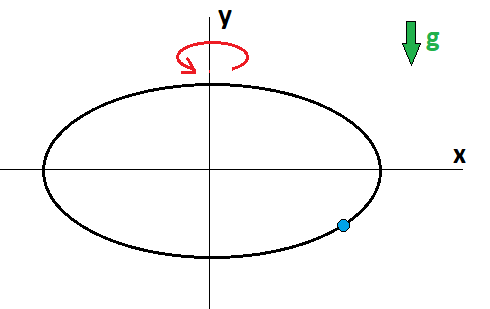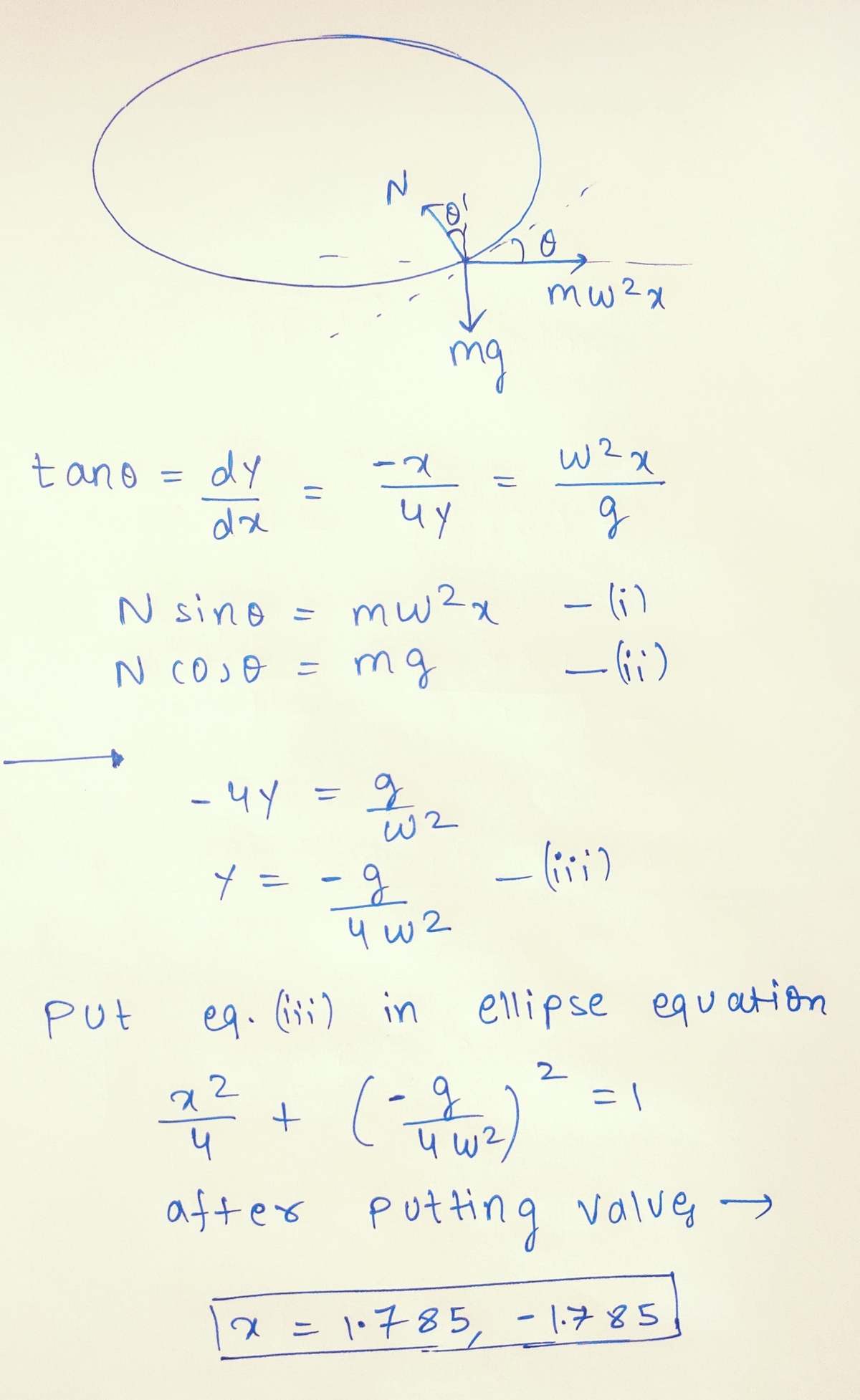Elliptical Tachometer
There is a bead attached to a smooth wire in the shape of the following elliptical curve. The bead is confined to the wire, but can slide along it freely.
4 x 2 + 1 y 2 = 1
The wire rotates around the y -axis with constant angular speed ω . If the bead maintains a constant distance D from the y -axis, what is ⌊ 1 0 0 0 D ⌋ ?
Details and Assumptions:
1)
Bead mass
m
=
1
kg
2)
Gravity
g
=
1
0
m/s
2
in the
−
y
direction
3)
Angular speed
ω
=
4
3
π
rad/s
4)
⌊
⋅
⌋
denotes the "floor" function

The answer is 1785.
This section requires Javascript.
You are seeing this because something didn't load right. We suggest you, (a) try
refreshing the page, (b) enabling javascript if it is disabled on your browser and,
finally, (c)
loading the
non-javascript version of this page
. We're sorry about the hassle.
2 solutions
In a rotating system of reference there are two contributions to the potential energy: the gravitational potential, V g = m g y and the centrifugal potential, V c = 2 1 m ω 2 r 2 = 2 1 m ω 2 x 2 . The condition for equilibrium is d V / d x = 0 . If we express y as y = b 1 − ( x / a ) 2 , we get
m ω 2 x = m g a 2 b 1 − x 2 / a 2 x
where a = 2 meter and b = 1 meter. Solving this for x we get x = a 1 − ( ω 2 a 2 g b ) 2 = 1 . 7 8 5 m
